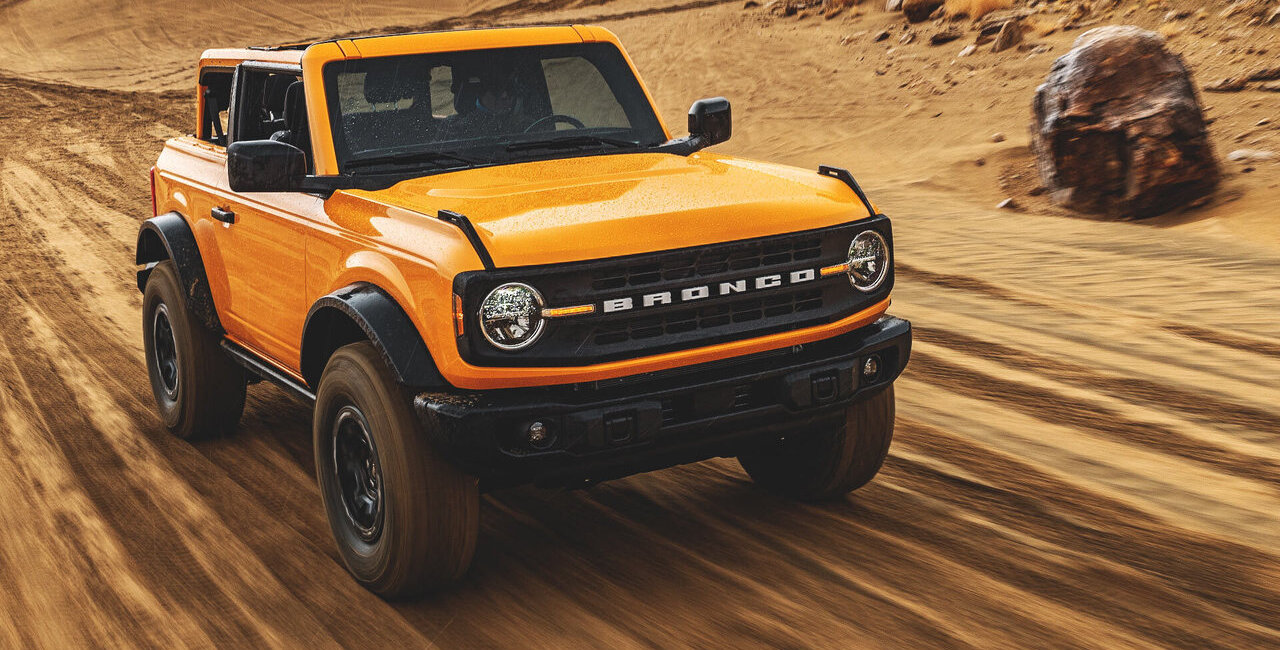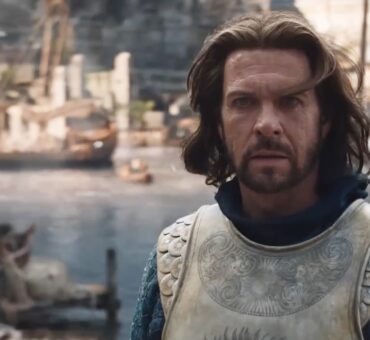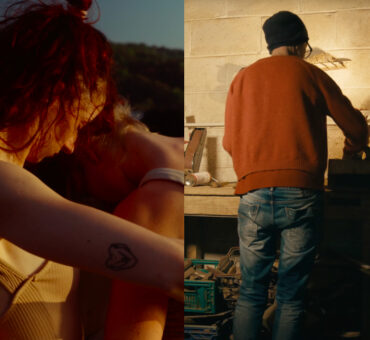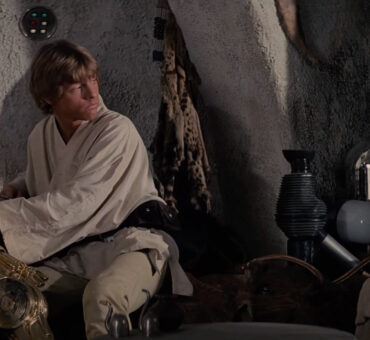When you’re relaunching a brand as iconic as Bronco, Ford’s brand of 4×4 off-road vehicles, there’s more than a little bit of pressure. It’s almost like remaking The Godfather. In other words, you better not screw it up or you’re going to have an army of angry fans at your door. Wieden+Kennedy’s team was facing this pressure head-on, and so much of their brand reveal hinged on the creative—specifically the director’s vision and the music.
“More than just an iconic nameplate with an all-terrain legacy, we decided we wanted to create something where Ford would be in charge of what people think about the new Bronco outdoor brand,” Copywriter Adam Crouch told us.
Adam, along with Producer Ava Rant and Art Director Alex McClelland, were three of the brains behind this monumental task. We had a chance to talk with them about the process of making tough creative decisions, from choosing award-winning Director Salomon Ligthelm to working with Musicbed Composer Ryan Taubert on the original score.
Learn how they pulled it off and used creative choices to impress some of the most vicious critics on the planet—online forums.
Here are Adam, Alex, and Ava.
Musicbed: How did you settle on the final concept for the Bronco campaign?
Alex McClelland: We were going through that process over the summer in 2019, throwing stuff at the wall and seeing what would stick. The initial method was: “Anything that’s non-traditional, let’s try to do something like that.” We thought about doing a physical event. We went through rounds and rounds of work where we were trying to do takeovers all over the country.
Eventually, we figured out what they wanted to say. And the best way to go about it was to have this really big, emotive piece. It needed to be a piece that gives someone a sense of what we’re really trying to say, instead of trying to hide it in some subway station takeover, where we turn it into a jungle or something like that [laughs].
Adam Crouch: Pretty much everyone knows the original Broncos. There’s the image people have created in their mind, and they had a vague idea of its pop-culture importance. We decided we wanted to create something where Ford could define what people think about the Bronco now, like expanding beyond two-doors. They’re building an off-road brand that differentiates from their mainstream SUV lineup. It was more of a brand reveal, which came to life through a series of manifesto pieces that told you in no uncertain terms, “This is what the Bronco is.”
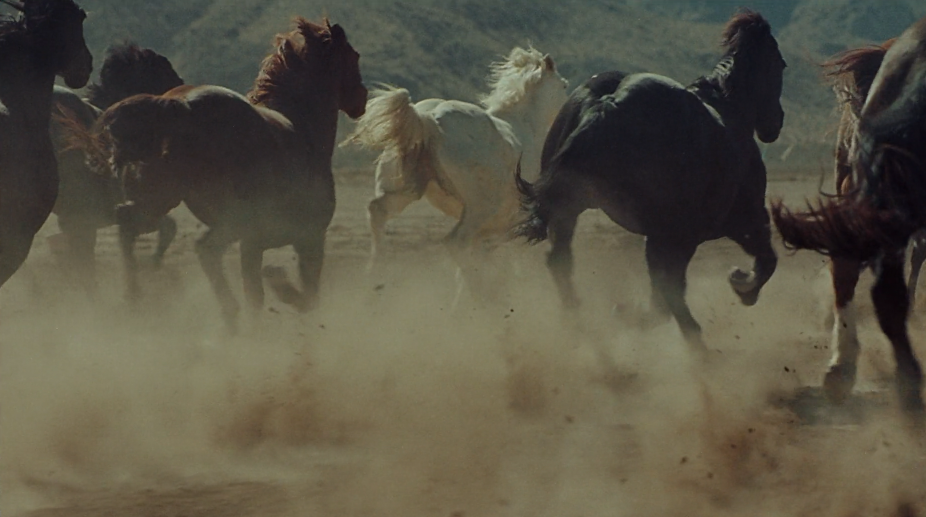
How did you land on Salomon Ligthelm as the director?
Ava Rant: We sent out a long list of directors to the team, and Alex and Adam narrowed it down and threw in their choices. We ended up presenting a shorter list to our creative directors, and then our top recommendations to Ford. With Salomon, we had some good calls with him in the beginning. His treatment was beautiful; the imagery was really awesome.
Adam: It felt like Salomon brought an element to the project that we didn’t have already, which was the more dark and moody elements of what he shoots. The way he captures that in his films is really unique. You don’t feel necessarily sad or angry even though it’s framed in this sort of dark ambiance. Bringing him to the table was what we thought could kind of push it forward a little more. Alex, you might have a different perspective on that.
Alex: No, I totally agree. Looking at his treatment, and watching his reel and his past work, I could hear our VO being read over his stuff. It seemed like it would marry very well together. His work has this rich depth to it that would give the VO weight without taking itself too seriously. Typically brands steer clear of anything too moody, and want to make sure the work communicates in a positive way. Salomon seemed like he could bring a lot of these things that they were looking for, elements of humanity and realness in a way that was cool.
Adam: We didn’t want it to feel like a car commercial and Salomon’s reel does not look like a car commercial. A lot of decisions were made based on the fact that we didn’t want it to feel like a car commercial.
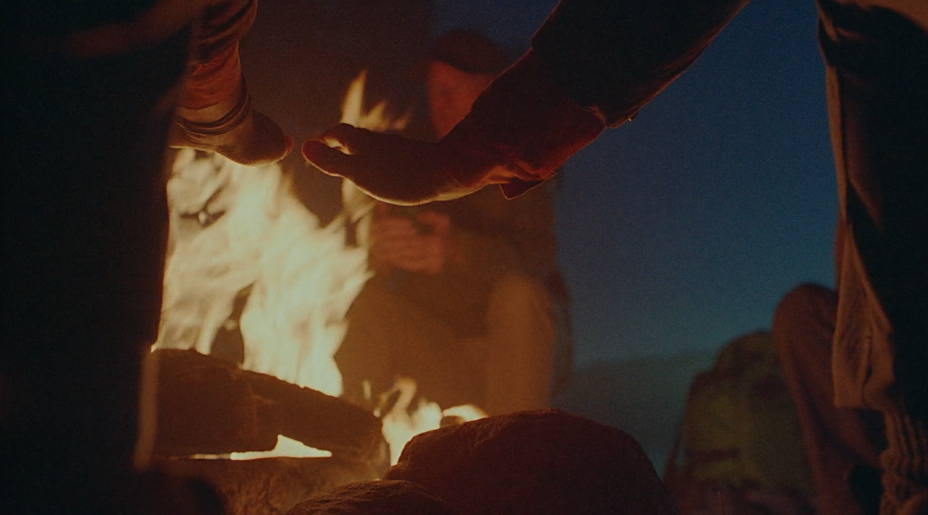
Was it difficult to sell Ford on a filmmaker who has such a unique vision?
Ava: We’ve worked with Ford for a few years now and it’s a great relationship and partnership. They’re super trusting of us. They know that we would never present a director who we didn’t think could strike the right balance. It wasn’t a tough sell by any means. And I think that balance comes into play a lot in the edit.
How so?
Ava: It always starts with storyboards. Salomon really boarded it out in a detailed way. And we worked with Matt Burke, who’s an editor through Joint, our in-house editing facility. Salomon and Matt worked together for a week before we even got in there, and I saw those boards coming to life.
Alex: Salomon’s vision and the little vignettes that he had picked up, the things that we shot, and the way they came together in the edit, it kind of just made sense. And, as with most other Ford projects that I’ve worked on, we were constantly focused on the music.
What was the team’s initial vision for the music?
Adam: We wanted this ad to tell you how to feel about the Ford Bronco brand and their all-new lineup. We tried a lot of things. We tried hip-hop tracks over it. We tried classic rock over it. We tried weird songs like “Crazy Horses” by the Osmonds, just to see what it would be like. There was always something that wasn’t quite working. We realized that if we’re telling you a new way to think about the Bronco, and the future of off-roading, we should be giving you a soundtrack that’s new.
There were rounds and rounds of, “This one sounds too orchestral, this one’s not orchestral enough. This one’s got a choir and that’s good and this one’s got a choir, but it’s bad for some reason. We’re not sure why, but it doesn’t work.”
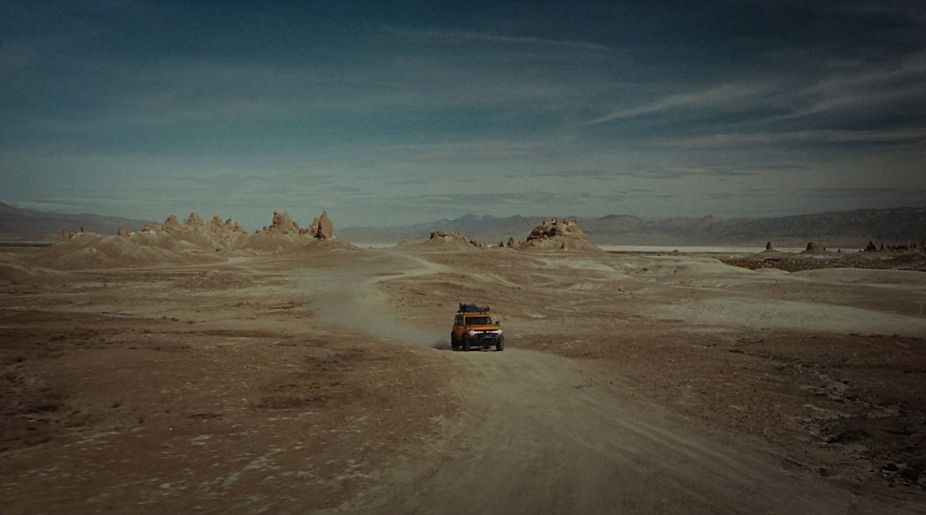
How do you give and receive feedback on something that’s so instinctual?
Adam: One thing that’s helpful for me is figuring out the emotion that’s attached to it. There was one song and the client said, “Oh, I don’t like the drums.” But really, it felt too aggressive and it was the emotion of aggression that they weren’t liking. It was good to know that was the emotion we needed to avoid. The drums weren’t the problem, it was the overall emotion.
So I think asking enough questions to figure out the emotion they’ve attached to their feedback, has been a big thing for me. It’s conceptual and opinion-based and intuitive. Figuring out those emotions and then navigating them, is the way that worked for me.
Alex: I agree. It works in reverse, too. If the client can’t pinpoint what they don’t like about it, but they’re like, “Oh, it’s just too scary.” You can then ask them what makes it scary. It could be the same track, but just not as high paced or maybe switch out one of the instruments. Maybe the organ should be a piano instead of something so echoey.
Ava: I’ll also say that working with Ryan [Taubert] made a huge difference. He composed all the pieces that came after that initial 90-second manifesto. A lot of the time when we work on an original composition, we’re working with the producer and the creative director and we don’t really have a ton of contact directly with the composer. With Ryan that was different. There was no one on the call except for him. A lot of the time we’d send the clients feedback and say, “Here’s what they said.” And he’d work with it.
Adam: There was honing, honing, and then there was just a certain point where it was like, “Yeah, that’s got to be it.”
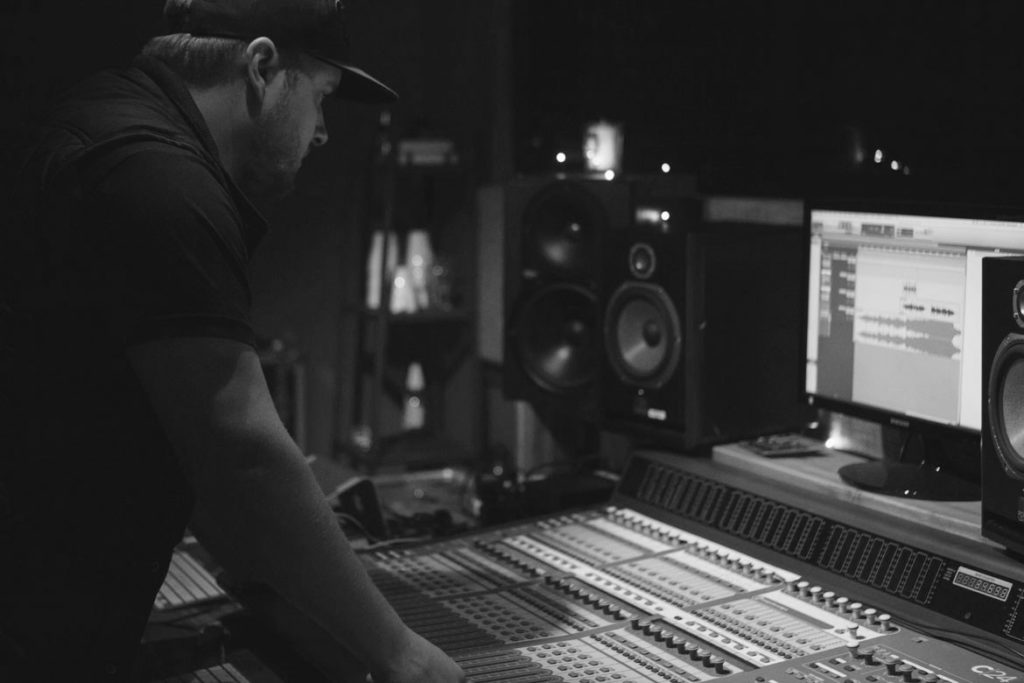
What was it about the final score that you feel worked?
Alex: When we set out to find music, we started talking about our approach back when we saw Salomon’s Valvoline spot. We really liked the music. It wasn’t competing with the VO, and it had this structure that let the words really shine. It almost had this spoken word feel to it that had this really raw energy.
We thought, “It would be really awesome if we could bring that feeling to ours. If we could get music that was more progressive, a little bit more sparse, and complimented the picture.” We wanted to let the sound of the vehicle shine and do its thing. The music really helped drive the energy. We got what we ended up setting out for originally.
Adam: We really wanted you to watch it and get everything Bronco. We wanted you to end with, “I’m excited about this.” Rock felt way too predictable. Hip-hop worked in some ways, but then it felt like too in your face. It was the star of the show rather than the Bronco SUVs and the message. The score intrigued us because scores exist to support what you’re seeing. That’s their whole thing. You can use a score to create any emotion.
Ava: We always toss the word “cinematic” around to just pretend we’re filmmakers [laughs]. But in talking about this project, we decided it isn’t a brand campaign, it’s a brand reveal. It’s sort of like a trailer getting you hyped for that moment, which worked well with our music choice.
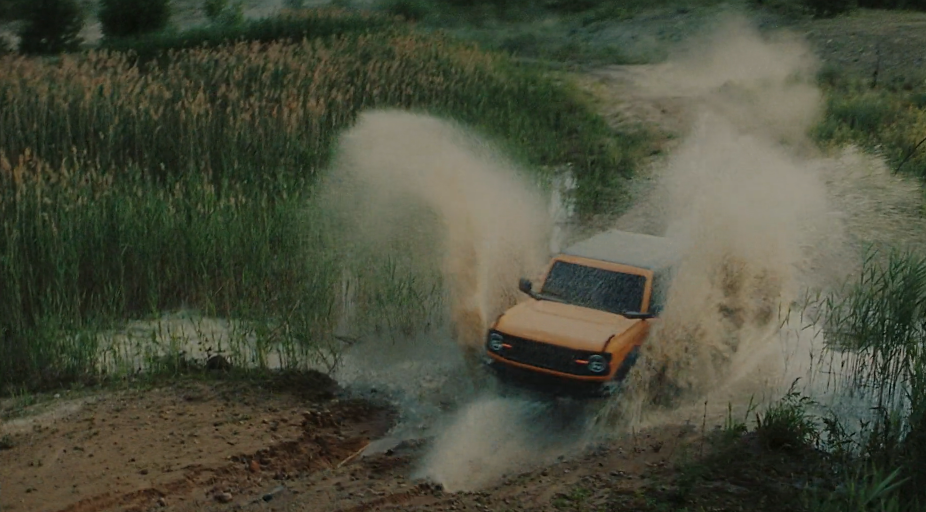
What was the response to the reveal overall?
Adam: My parents loved it, so…
Alex: That’s all you need to know.
Adam: The response was really good. Alex, Ava, and I have buried our heads in these Bronco forums. We’re all on these fan pages, reading the comments, and seeing what people like and what they don’t like. We were super nervous.
Alex: They have a lot of opinions. A lot of opinions.
Adam: I knew if they didn’t like it, I’m just going to watch my stuff get scorched for the next two weeks until they find something else to make fun of. It was really cool to see these people who we really wanted to impress, and now they’re really excited about this. Obviously, a huge part of it is because the vehicle looks awesome. Ford crushed it, so that definitely helps.
I’ve been paying attention to these names in the forums. This guy has these fiery opinions like, “Why isn’t this out yet. I need to know this. They better do this.” To release the spot and have the same guy say, “Look at this. It’s awesome,” was really cool. I did it for you, Dale.
Collaborate with our leading composers and producers, or one of the hundreds of artists we represent, on your next project with Custom Music.















































































